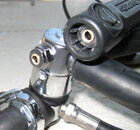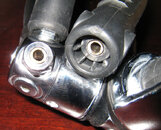ChrisEdwards
Guest
This hose failure happened to me as I was rinsing my gear. It is the LP BC inflator hose that came with my ScubaPro Knighthawk BC, that I purchased about a year ago.
It has about 25 dives on it. This has never been dropped or abuse,d from my knowledge, and has always travelled in a regulator bag, when not in use.
I'm just a bit surprised.

It has about 25 dives on it. This has never been dropped or abuse,d from my knowledge, and has always travelled in a regulator bag, when not in use.
I'm just a bit surprised.





